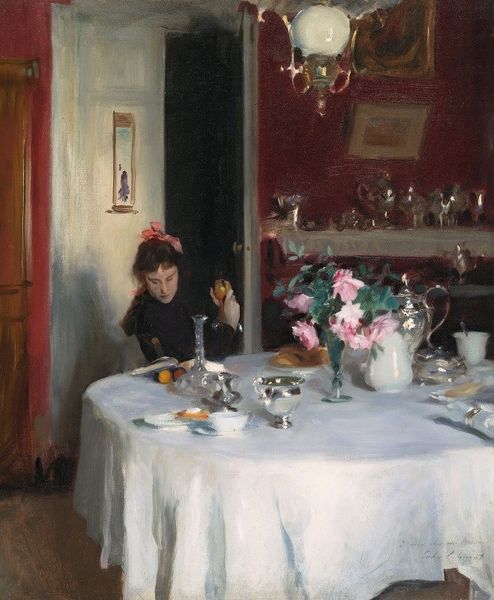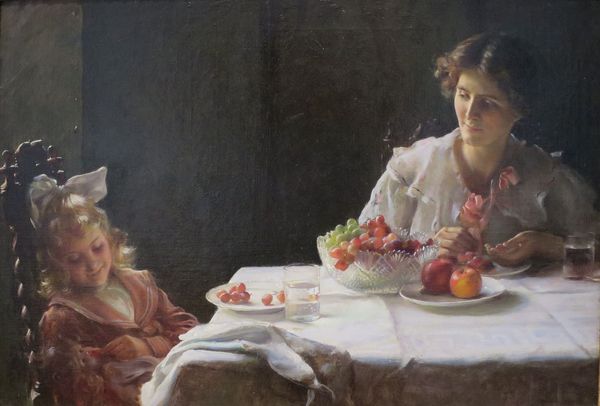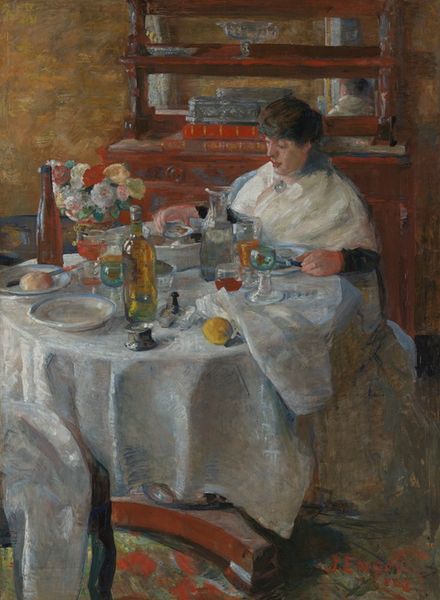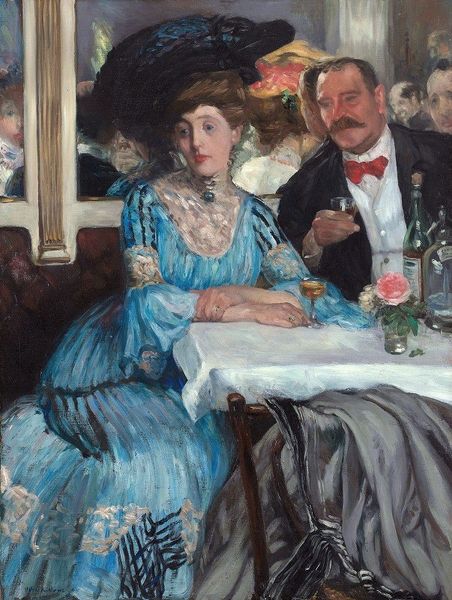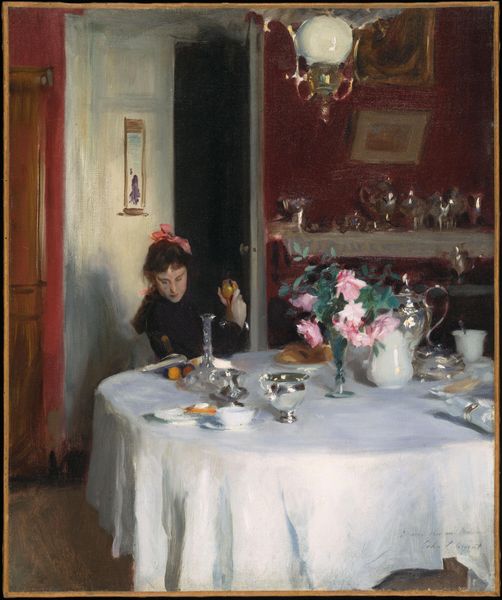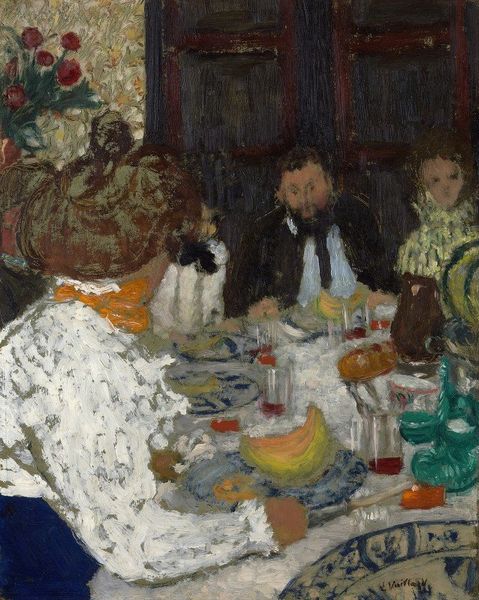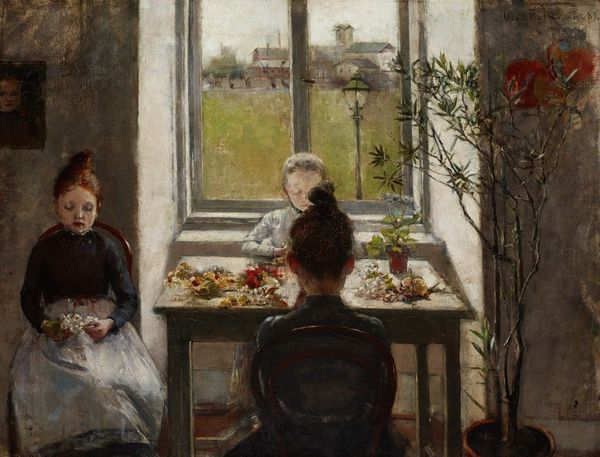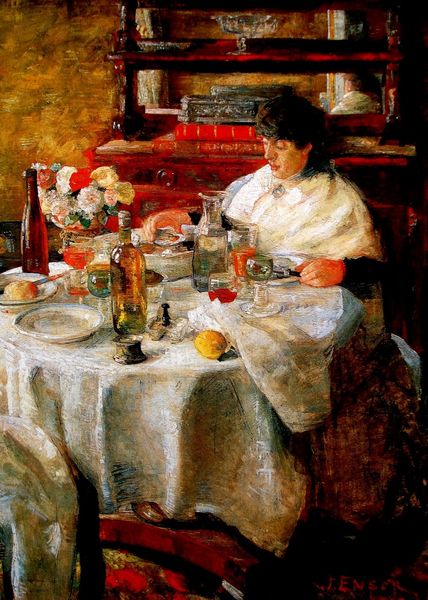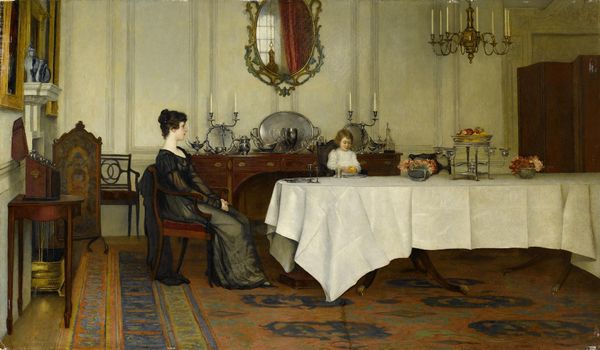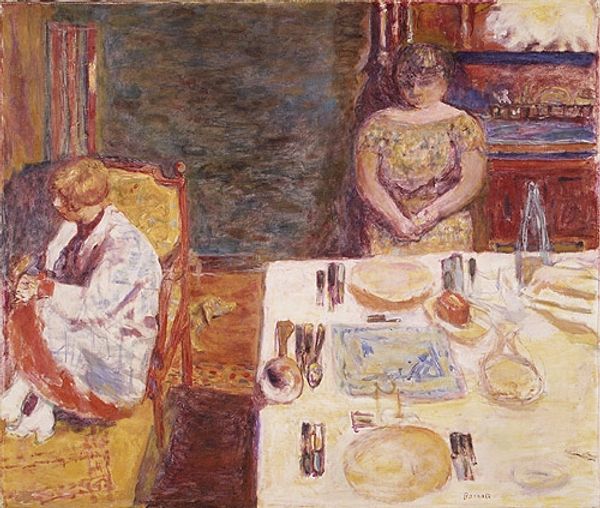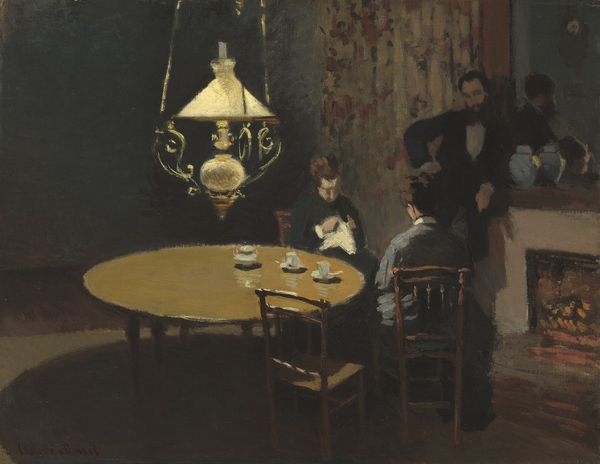
oil-paint, oil-on-canvas
#
portrait
#
figurative
#
impressionism
#
impressionist painting style
#
oil-paint
#
figuration
#
oil painting
#
painterly
#
united-states
#
painting painterly
#
genre-painting
#
oil-on-canvas
Dimensions: 24 x 29 x 3/4 in. (60.96 x 73.66 x 1.91 cm) (canvas)23 1/2 x 28 1/2 in. (59.69 x 72.39 cm) (sight)32 x 37 x 2 3/4 in. (81.28 x 93.98 x 6.99 cm) (outer frame)
Copyright: Public Domain
John Singer Sargent captured this family scene with oil on canvas. Look at the candles on the birthday cake, symbols of celebration and the passage of time. But their meaning runs deeper. Candles have been used since ancient times in sacred rituals, representing light in darkness, hope, and remembrance. In many cultures, blowing out a candle symbolizes the fulfillment of a wish, a moment of personal power. This act is a microcosm of life itself, a brief illumination against the vastness of time. Consider the presence of a lit candle in religious iconography, from Christian altars to Buddhist temples, and their use during funerary rites in ancient Greece. Notice how the warmth and symbolism associated with candle-lit celebrations of life continually resurface, evolve, and take on new meanings in different historical contexts.
Comments
Join the conversation
Join millions of artists and users on Artera today and experience the ultimate creative platform.
minneapolisinstituteofart almost 2 years ago
⋮
This vivaciously painted work is one of several interior scenes from the 1880s featuring portraits of Sargent’s friends. Here the French artists Albert Besnard (1849–1934) and Charlotte Dubray Besnard (1855–1931) are shown celebrating the birthday of their eldest child, Robert (1881–1914). The painting has traditionally been dated to 1887 based on the number of candles on the cake (apparently six). However, the looseness of Sargent’s brushstrokes makes the candle count an unreliable marker. A series of etchings of Robert by his father suggests a slightly earlier date. The same childish jowls, undefined brow, and innocent stare depicted by Sargent appear in the prints before 1886. Albert Besnard recalled Sargent painting the work in 1885. Robert would have been turning four. Charlotte would have been pregnant then, which could account for Sargent placing her maternal presence at the very center of his work.
